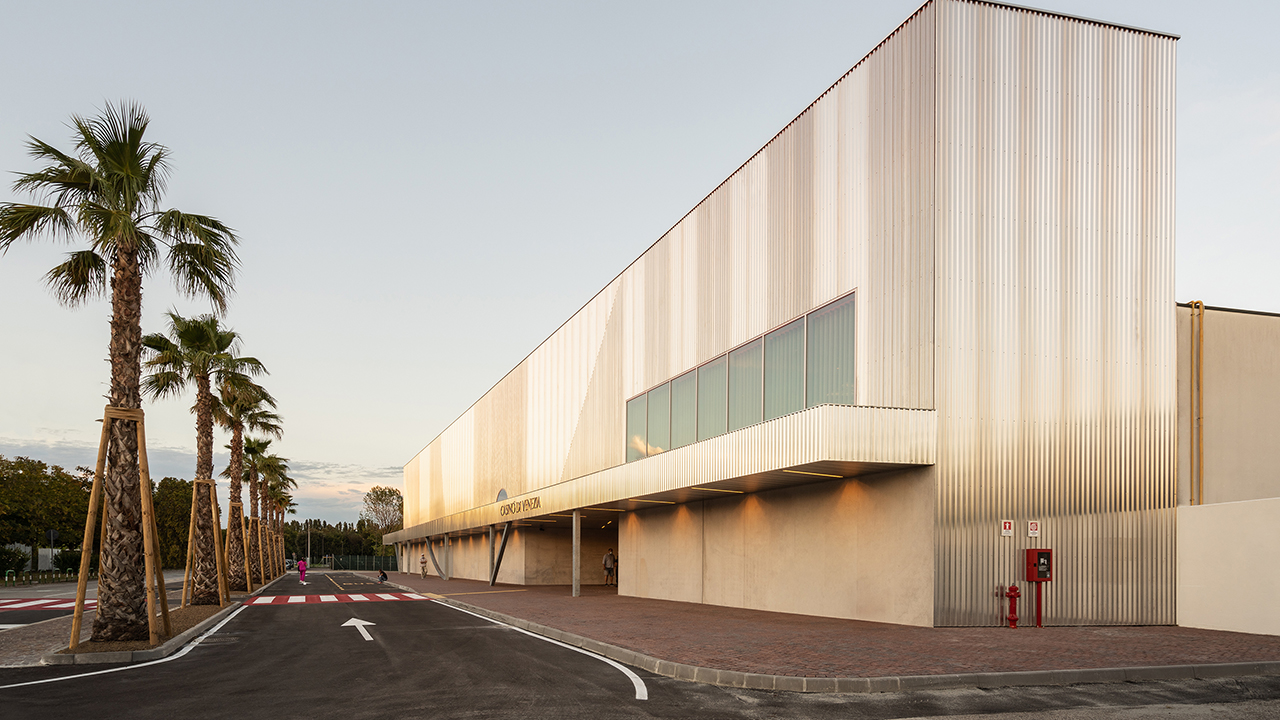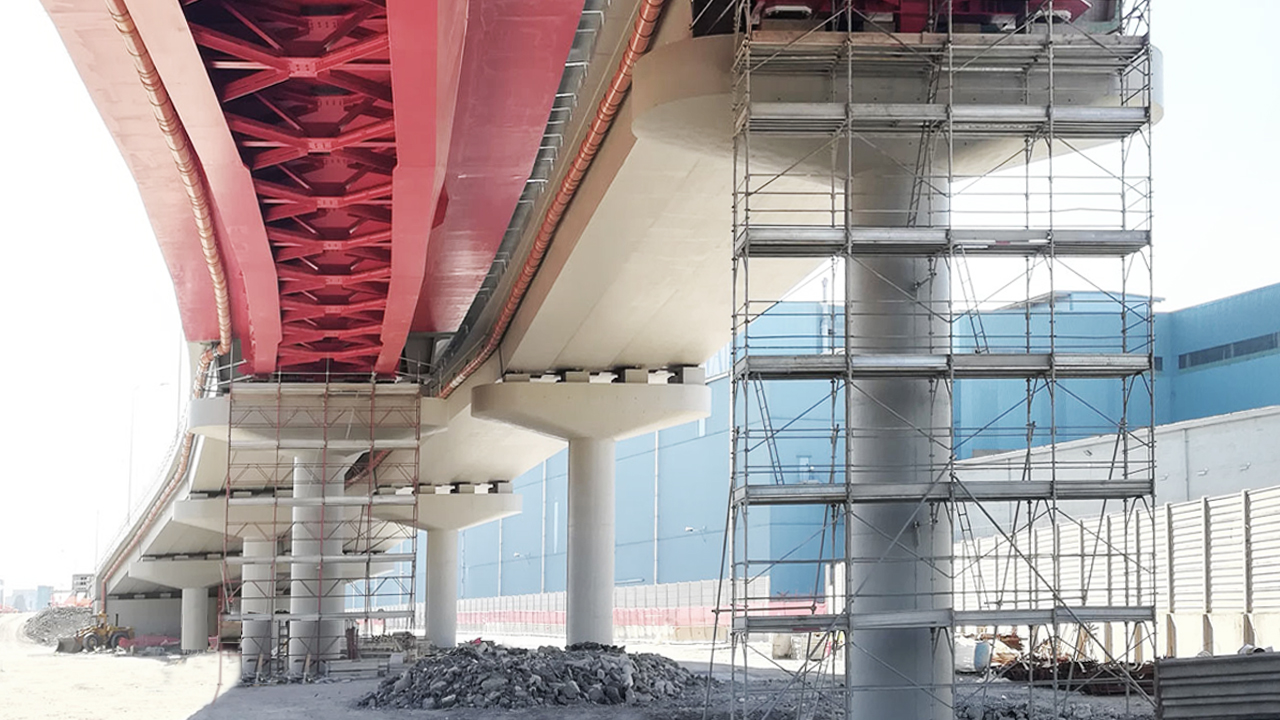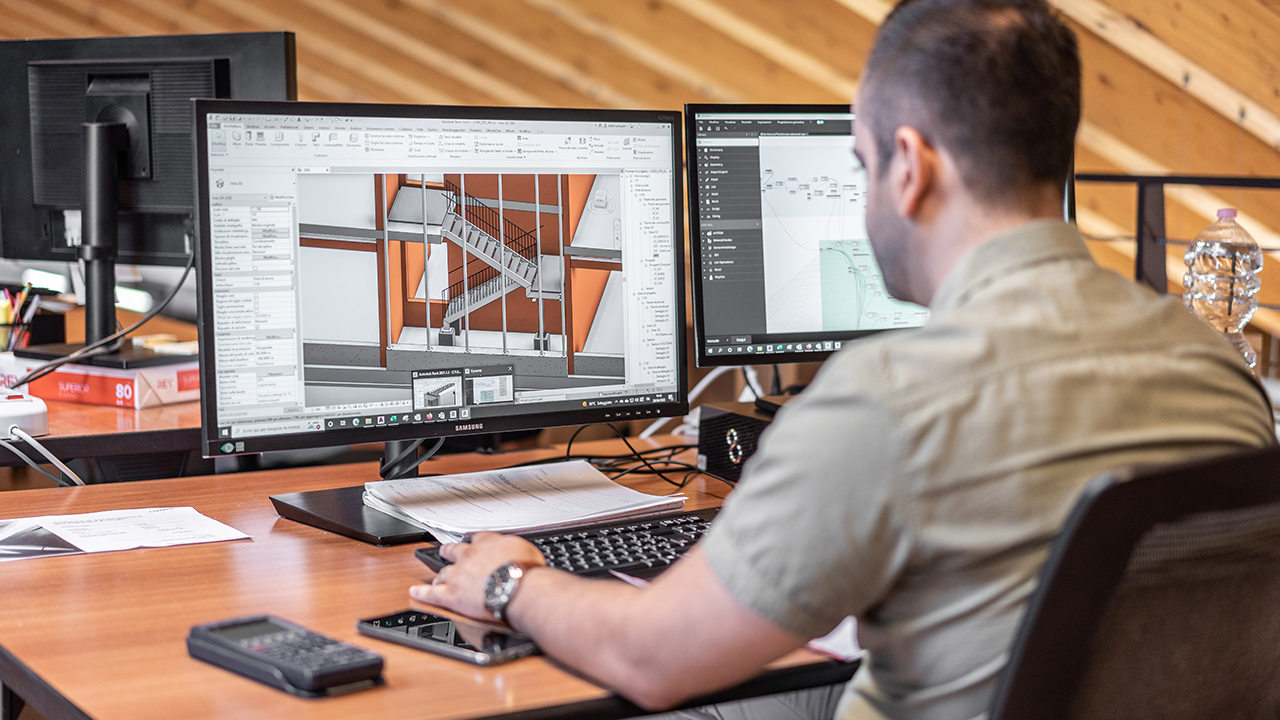- About us
- Company details
Sinergo is one of the leading design companies in northeastern Italy. Thirty years of experience in the field of engineering enable us to engage with complex projects using an agile and multidisciplinary team, both for public and private clients. This is because our focus is on integrating specialized components, thanks in part to BIM technology.
Integrated design – we develop and coordinate the conception, authorization process, design, and implementation of complex projects in major Italian cities - Venice, Rome, Verona, Milan, Bologna, Trani, Palermo. In projects for civil and industrial buildings, we pay particular attention to the integration of specializations. In tertiary and large public works projects, in addition to collaborating with international firms, we have been participating in design competitions and tenders for years, both independently and with the most promising Italian architecture studios.
Mobility and infrastructure – we are active in the main Italian airports – including Venice, Verona, Milan, Palermo, Bergamo, Rome Fiumicino, and Bologna – and we have extensive experience in designing specialized facilities such as baggage handling systems (BHS), aviation ground lighting (AVL) infrastructures, and ground support equipment for aircraft. Within airport areas, we are developing the first Italian projects of solar farms along runways for decarbonization and energy savings. In the infrastructure sector, we have multi-year framework agreements with ANAS and RFI, and we are involved in road projects and large-scale structural works commissioned by the public sector.
Energy transition – we rely on a specialized team for the development of initiatives related to ecological and energy transition. This includes the production of energy from medium and large-scale renewable sources such as solar, wind, hydroelectric, biogas, biomass, biomethane, and thermodynamic solar. We are also involved in district heating, electric mobility, and energy efficiency for both civil and industrial constructions.
Year of establishment:
2008
Number of employees:
FROM 50 TO 99 EMPLOYEES
Annual turnover:
between 5 and 15 million Euro
Reference year of turnover:
2024
Export turnover:
Not available
Activities:
Architectural and engineering activities and related technical consultancy
- Contact Information
- Business Proposals
Company:
SINERGO SPA
Web site:
Address:
VIA CA' BEMBO 152
City:
MAERNE DI MARTELLAGO MARTELLAGO (VE)
Zip Code:
30030
E-commerce:
Social media:
Tag:
No business proposals uploaded
- Map
Integrated Design

In the construction of a building, the formal and functional result is always ensured
by the correct harmonization, through careful coordination, of program requirements, economic,
technological, and regulatory conditions. Without forgetting our origin as an engineering company
- in fact, leveraging the wealth of expertise we possess in the technological analysis of projects
- we are involved in integrated projects, which we realize through a multidisciplinary group that, thanks to BIM, works to give complete form to complex architectures.
Infrastructure and mobility

Airport Infrastructures - Since 2015, we have been involved in a wide range of airport projects. We develop projects for airports in Venice, Bologna, Milan Malpensa, Palermo, Treviso, Verona, and Ro-me, both in airside areas related to runways and in landside areas associated with terminals.
Road Design - In infrastructure projects, we work on various scales, from resolving local road inter-sections to designing major arteries within vast areas. Notable projects include the development of SR 10, connecting S.S. 434 to S.S. 16 (with ProIter), the bypass road between Resana and Castelfran-co, the Genoa airport junction, and the Padova Est exit on the A4 highway. Since 2017, we have been following two Framework Agreements with ANAS Nord Ovest in Valle d'Aosta, Piemonte, Liguria, Lombardia, and Toscana for road infrastructure development.
Lighting, Drainage Systems, and Sound Barriers - Lighting, drainage systems, and sound barriers de-termine the functionality and efficiency of infrastructure projects, defining their impact on the sur-rounding area. That's why in this field, too, we adopt a design approach that integrates systems engi-neering with architectural, structural, and geotechnical solutions.
Energy transition

Ever since the establishment of Sinergo as a joint-stock company, we have relied on a specialized team for the development of initiatives for ecological and energy transition. This includes the production of energy from medium and large-scale renewable sources (photovoltaic, wind, hydroelectric, biogas, biomass, bio-methane, thermodynamic solar), district heating, public and private electric mobility, energy efficiency for civil constructions and industrial activities, cogeneration, and trigeneration.
Among the key projects managed in recent years are: the tracking photovoltaic plant in Castelguglielmo (5.6 MW, 2011-2014), the wind parks in Calice Ligure (2 MW, 2011-2013), Armo (5 MW, 2009-2012), Buse-to Palizzolo (22 MW, 2014-17), Rosario (6 MW, 2018-2021), hydroelectric power plants on the Canal dei Dottori in Monfalcone (0.55 MW, 2009), and on the Tanaro River in Castello d’Annone (1 MW, 2014-2015).
Over the years, we have developed district heating projects: for the biomass thermoelectric power plant and the network in Asiago (1 MWe, 10 MWt, 2014), and for the networks serving the municipalities of Schio (VI) and Forni di Sotto (UD).
In the airport sector, we are overseeing the first photovoltaic field interventions in airside areas for Fiumicino Airport in Rome and Bologna Airport.
BIM - Building Information Modeling

Consistently with our multidisciplinary approach, we design using the BIM methodology - Building Information Modeling. We have multiple licenses of Autodesk Building Design Suite software, which serve architectural, structural, mechanical, and infrastructural development of models. The design process involves coordinating models from various disciplines – including integrating ifc files generated from multiple BIM Authoring software – to check for geometric clashes and inconsistencies (clash detection) as well as informational discrepancies (code checking). With BIM, we monitor project quantities and costs (quantity take-off), minimizing calculation errors and forecasting cost margins.
Our design development applies to both buildings – whether new constructions or existing ones – and infrastructures. Our integrated approach has enabled collaborations with universities – including Politecnico di Milano and the University of Padova – on various topics, with a particular focus on HBIM for heritage buildings and the generation of BIM models from point cloud surveys (scan to BIM). Additionally, we are working on managing models in the open IFC (Industry Foundation Class) format and their parameters through IfcPropertySet, in line with client requirements, allowing model property consultation for all stakeholders in the process.
Collaborative mode – Integrated design is achieved through multidisciplinary collaboration, often involving teams operating in different locations. Hence, we utilize cloud-based collaboration and coordination platforms for managing BIM models (Common Data Environment). These platforms facilitate web-based model sharing with the design team, clients, and stakeholders, progress verification reporting, collaborative modeling, and real-time resolution of design interferences and issues.
BIM and Quality System – Since 2016, the BEP – BIM Execution Plan, has been an integral part of our Company Quality System. This document aligns with BIM Decree 560 of December 1, 2017, EN-ISO 19650 standards, UNI 11337, and PAS 1192, formalizing our approach to digital process management. It defines: a. roles and responsibilities of in-volved figures - BIM Manager, Coordinator, Specialist/Modeller; b. the correlation between project development levels defined by the procurement code and LOD (Level of Development) established by the American Institute of Architects; c. methods for setting stakeholder objectives, deadlines, and transmission formats; d. protocols for verifying geometric clashes and informational inconsistencies; e. computational resources allocated to the project.


